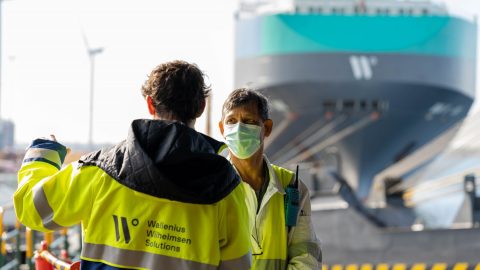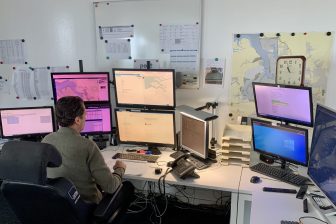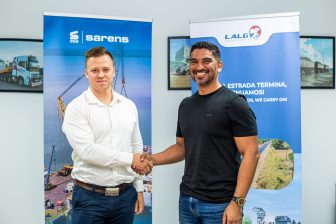
Wallenius Wilhelmsen: congestion easing at North Europe’s RoRo hubs
One month into the new year and the efforts from partners across the supply chain during last quarter have started to ease congestion in North Europe’s RoRo hubs by improving labor availability, berth access and yard’s occupancy ratios, Wallenius Wilhelmsen’s latest analysis reveals.
“Demand for tonnage is very strong and we remain committed to accommodating our customers’ import and export volumes,” says Delphine Echenique – SVP business operation, West. We are in constant dialogue to understand both current and future needs to evaluate how to best support these volumes across our network while also ensuring continuity of any value-added services.”
German ports reached a wage settlement last September, in addition to reconfiguring some of its operational processes to be more efficient. Mary Carmen Barrios – SVP ports, terminals and stevedoring, EMEA – says these efforts have greatly reduced the logjam of vessels. “The average time Wallenius Wilhelmsen vessels are in the port of Bremerhaven has been significantly reduced compared to the peak in August. This has been the result of joint efforts from all port stakeholders to create the necessary working conditions to reduce waiting time for vessels and improve throughput of customers’ cargo.”
In Southampton, vessel schedules were disrupted partially due to labor shortages during the summer cruise season. “To mitigate effects of the labor-market volatility, we increased supply sources and developed a new requisition process in an effort to reduce ‘no-shows.’ The average port call time in January was reduced by 4 days, representing a 72 percent reduction from August,” says Barrios.
Driver shortages in UK and Europe mean that some importers are struggling to collect their cargoes from ports as quickly as usual. Terminals are reporting longer cargo dwell times before collection, affecting some sectors, due to a variety of underlying issues such as warehouse capacity. This is a factor we are closely monitoring and working along with terminals and customers to prevent new bottlenecks.
Positive signs for Wallenius Wilhelmsen in Zeebrugge
While the Port of Zeebrugge is still facing significant terminal congestion and vessel delays, operations management is evaluating a variety of efforts to secure additional berth slots of vessels, labor to load and discharge cargo, and storage space. Given the significance the port of Zeebrugge plays for RoRo shipments in and out of Europe, it is taking a collective effort from all operators and tenants of the port to relieve pressure and improve cargo flows.
Zeebrugge also serves as a strategic hub for Wallenius Wilhelmsen’s global ocean and land-based logistics network, and in turn any action taken in Zeebrugge may have a compounding effect on the company’s operations elsewhere. For example, Zeebrugge sees a large volume of EV imports from Asia. Any changes to how these vehicles are brought into Zeebrugge can impact onward transportation arrangements or the securing of labor to ensure vehicles are processed upon arrival.
Wallenius Wilhelmsen has been proactively reaching out to neighbouring terminals to enquire about berth and cargo storage availability. While some solutions have been found, the terminal still cannot accommodate all the cargo.
You just read one of our premium articles free of charge
Register now to keep reading premium articles.




